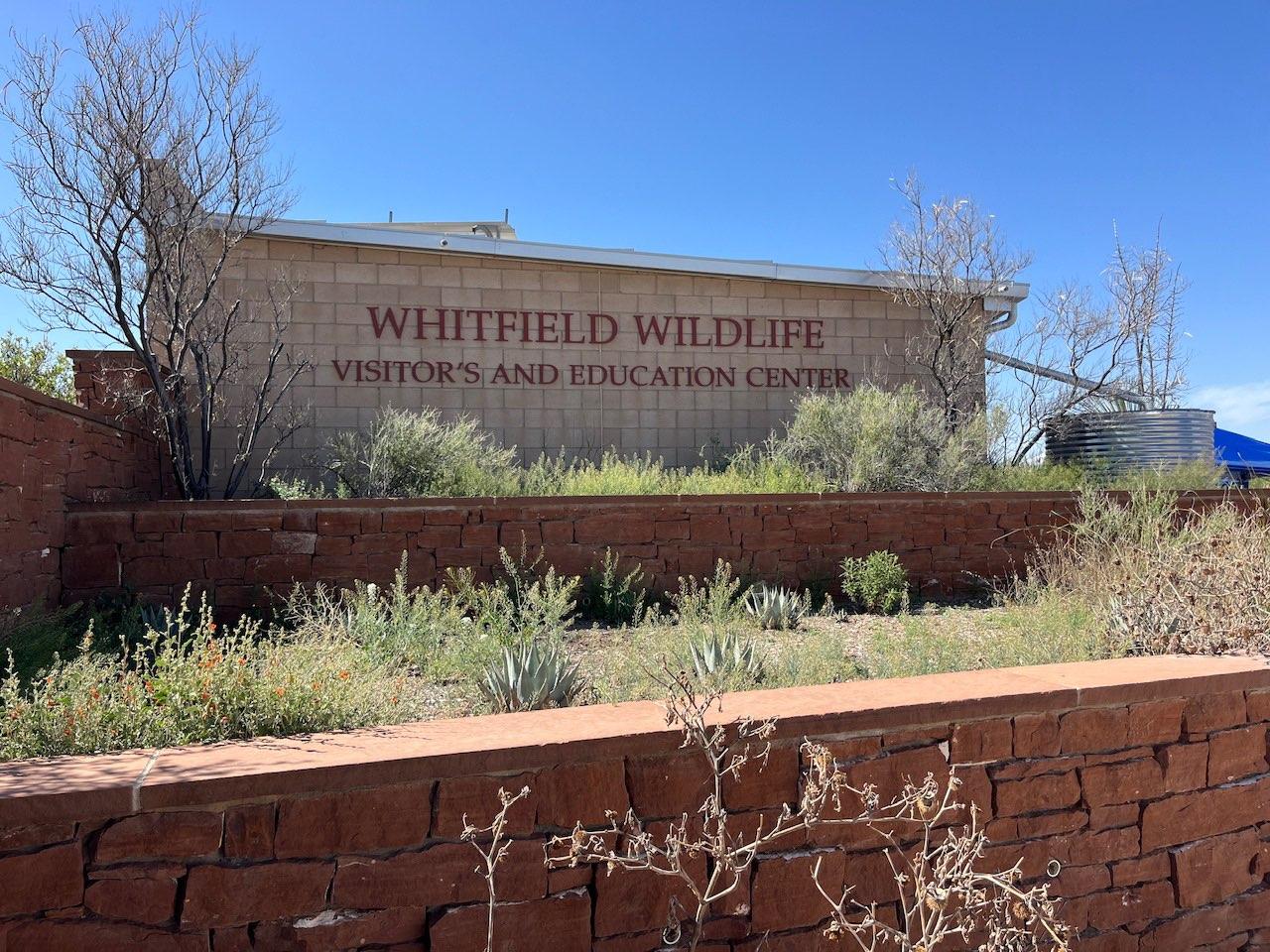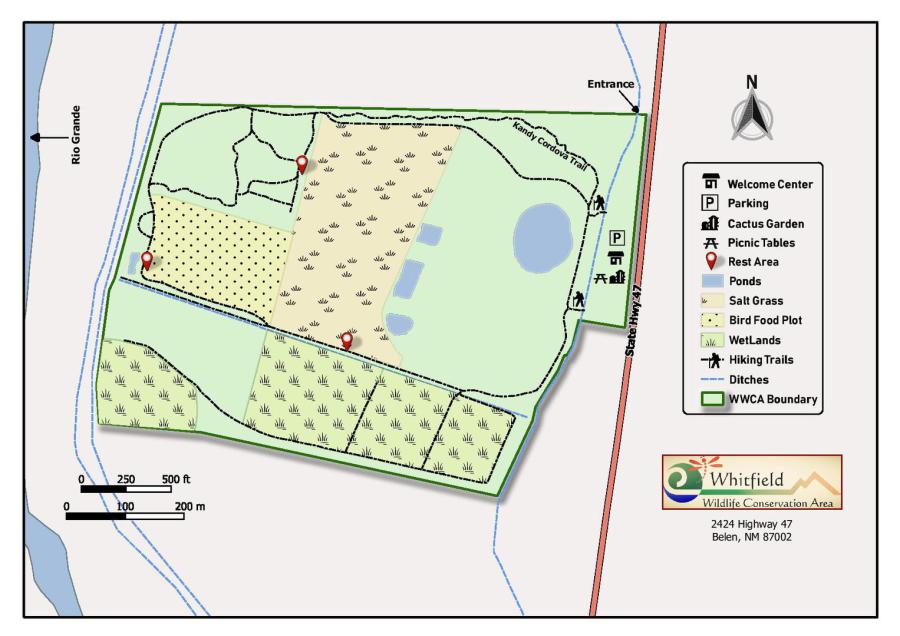Whitfield Wildlife Conservation Area

Whitfield Wildlife Conservation Area
Belen, New Mexico 87002
Official WebsiteWhitfield Wildlife Conservation Area map
Tips for Birding
Do not expect to access the canal levee, let alone enter the bosque between the canal and river, from Whitfield; the western fence gate is kept locked. However, standing at the back gate in the property's southwest corner, waterfowl may often be sighted flying up or down the canal, especially in early spring.
Birds of Interest
Black-chinned is the most common hummingbird species found here, generally present from mid-April to mid-October. Rufous Hummingbird is observed in August and September. Broad-tailed Hummingbirds are uncommon but occasionally listed in May as well as late August and early September.
August and September are also the periods when Virginia's Warbler is observed.
Rarely, Willow Flycatchers, Olive-sided Flycatchers, and Bell's Vireos are reported in May.
About this Location
In central New Mexico, the Rio Grande supports a cottonwood-willow riparian forest (commonly referred to by its Spanish name, bosque) and associated wetlands that are invaluable for sustaining wildlife and a supply of water for irrigation. In the past, many wetlands were converted to agriculture and, more recently, impacted by urbanization. To reverse the decline and degradation of the valuable Middle Rio Grande bosque and its associated wetlands so vital to good quality water and species survivability, the Valencia Soil and Water Conservation District embarked on a cooperative conservation project, the Whitfield Wildlife Conservation Area.
In April 2003, the Valencia Soil and Water Conservation District acquired a donation of a 97-acre tract of land in Belen, New Mexico, historically known as the Whitfield-Trammell Property or the old Curran’s dairy. This formed the initial conservation area known as the Whitfield Wildlife Conservation Area (WWCA), now a unit within the Whitfield Conservation Area Complex (WCAC) that also includes the Stacey Unit and the Rio Abajo Conservation Area. The WWCA has been put into a permanent conservation easement with the USDA Natural Resources Conservation Services Wetlands Reserve Program for the restoration and protection of the area.
The Stacey Unit was added to the WCAC in December 2015 as a donation to the District. With the donation, approximately 43 acres were added to the WCAC. The Stacey Tract has great potential to offer visitors expanded opportunities for physical activity or a place to foster mental and spiritual health.
The Rio Abajo Conservation Area, initially donated to the District in 2006, now consists of about 100 acres, with this part of the WCAC held in joint conservatorship with the NM Department of Game & Fish. The process of removing non-native, invasive vegetation -- particularly salt cedar and Russian olive -- is ongoing. Eventually, the area is to be planted with native vegetation. Birds observed here should not be listed for the WWCA hotspot.
With the cooperation of dedicated local, state, and national agencies and volunteers, the District constructed and maintains moist meadow units and new wetlands, protects existing wetlands, planted a food plot for migrating and resident birds and wildlife, and restored native vegetation in riparian buffer zones for food and shelter for wildlife.
The Whitfield Wildlife Conservation Area attracts a diverse audience of tourists, birdwatchers, hikers, and students who want to learn about wetlands ecology in an otherwise arid place. The Visitors’ and Education Center building opened in late 2009 and serves as a visitor center and environmental education facility. We provide learning opportunities to local school children as well as sponsor teacher workshops, adult education, special events, and other programs.
Features
Restrooms on site
Wheelchair accessible trail
Entrance fee
Content from Official Website and John Montgomery
Last updated April 27, 2024
